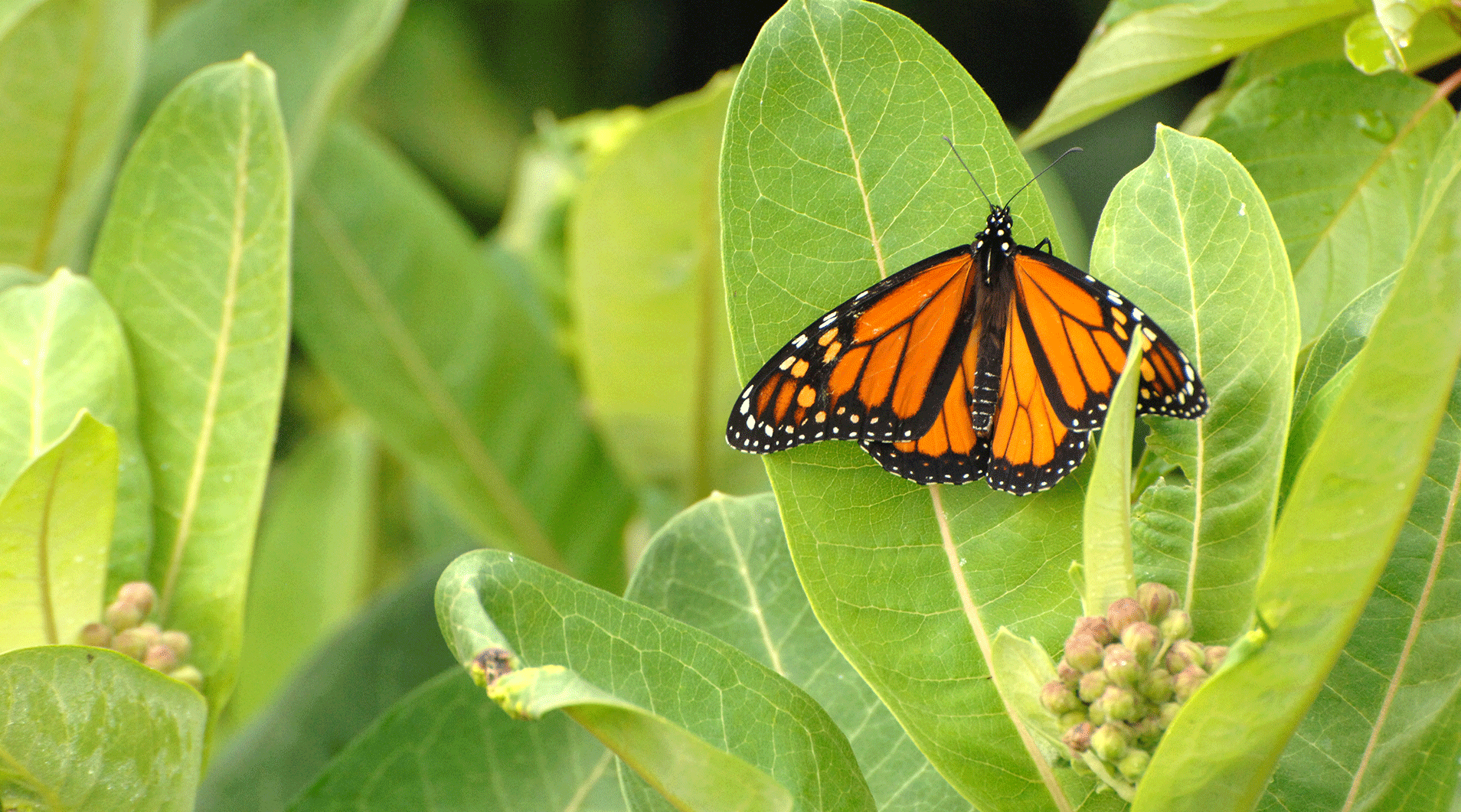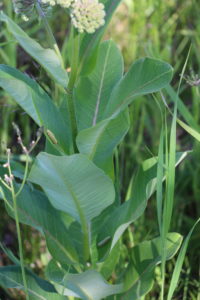I signed up for milkweed watch as encouraged on page 6 of your Spring 2018 issue.
2017 seemed to be a very good year for Monarch butterflies here. And as I have done for many years, I scattered the seeds as best I could on the property.
– Phelps Goodman
Monarch Butterflies Need to be Protected from Aerial Spraying
Exposure to gypsy moth (Lymantria dispar dispar — hereinafter “LDD” to avoid using the former culturally offensive term) insecticide Btk can kill monarch caterpillars, even if applied early in the season. I want to share my observations of a spring Btk application and the monarch butterflies that arrived earlier than expected.
In my neighborhood in 2019, residents were given advance notice of the Btk spray dates. I noted with alarm that monarchs were arriving in large numbers prior to the first spray date. I grow milkweed at home, so I brought inside every monarch egg I could find (approximately 50) up to May 26th. The Btk was dispersed by helicopter over my home and neighborhood on May 27th and June 7th. After each application, I sprayed down my yard and milkweed plants with my garden hose.
After the second spray date, I had to collect fresh milkweed to feed the indoor caterpillars. I washed and dried any milkweed that I brought inside for feeding, but I obviously failed to remove the Btk bacterium because the caterpillars began dying shortly after.
About 95% of the caterpillars I collected died at various developmental stages. Also, monarch butterflies didn’t return to my yard until late July, and not many came or laid eggs by then.
I expected the Btk bacterium to degrade after days past the application, exposure to sunlight, rain or tap water, and from warm temperatures. Is it possible that Btk remains active longer on milkweed plants? Or does Btk not degrade as quickly from time, heat, and UV exposure as online sources suggest?
I recorded the last caterpillar death on June 23rd. This means that from the first spraying of May 27th, my caterpillars had the potential to die from contaminated milkweed for 26 days. That is a long time period to interrupt monarch butterflies’ life cycle. If, as a result of climate change, monarchs continue to arrive earlier than expected, their egg laying will coincide with spring Btk treatments. This should be a consideration in the decision of whether the benefits of the aerial application of Btk outweigh the costs.
My experience is alarming because even if we preserve natural habitats, certain species can still be impacted as a result of other anthropogenic stressors. Most people would not notice the die-off of tiny caterpillars hidden in leaves. In 2019, my neighbors merely wondered why they didn’t see many monarch butterflies that year.
LDD moth populations are cyclical and known to crash after exploding. Btk does not eradicate their populations. They will survive in enough numbers to return another year. Monarch butterflies, on the other hand, are vulnerable and we should do everything we can to protect them.
– Nancy Moysiuk



No Comments Yet